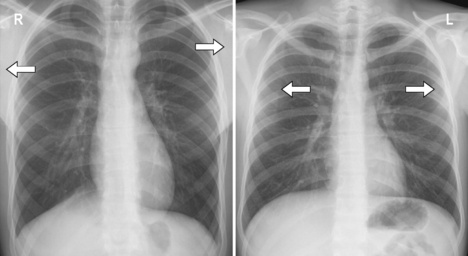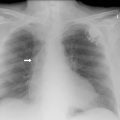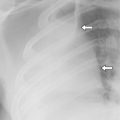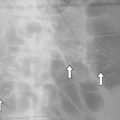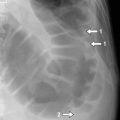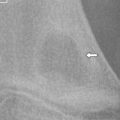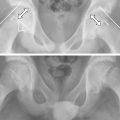6 Technical factors in CXR interpretation
Projection: posteroanterior (PA) versus anteroposterior (AP)
The ideal view is PA (left radiograph in Fig. 6.1) and is taken with the patient sitting or standing upright, with the front of their chest against the cassette. The x-rays go through the patient from their back through to the front, hence the description PA. For this view, the patient moves their scapulae laterally away from the chest wall by bringing their arms to each side of the x-ray machine. Performing this view requires the patient to be reasonably fit and well.
The AP view (right radiograph in Fig. 6.1) is taken with the cassette behind the patient. This is the technique used in portable films and for patients who are not well enough to sit or stand upright, such as ill inpatients.
To determine which projection you are assessing, first look to see if the radiographer has marked the film AP or PA. If the scapulae are overlapping the chest wall (arrows, Fig. 6.1 right) the film is AP. If they are not and are excluded, the film is PA (arrows, Fig. 6.1 left).
An important parameter to assess when looking at the CXR is the cardiothoracic ratio. This is the ratio of heart diameter at its widest point to thoracic diameter at its widest point. If this is over 0.5 on a PA film the heart is enlarged in its transverse diameter. This is a key assessment to make in heart failure (see Chapter 26). Heart size cannot always be reliably assessed on an AP film.
Stay updated, free articles. Join our Telegram channel

Full access? Get Clinical Tree


